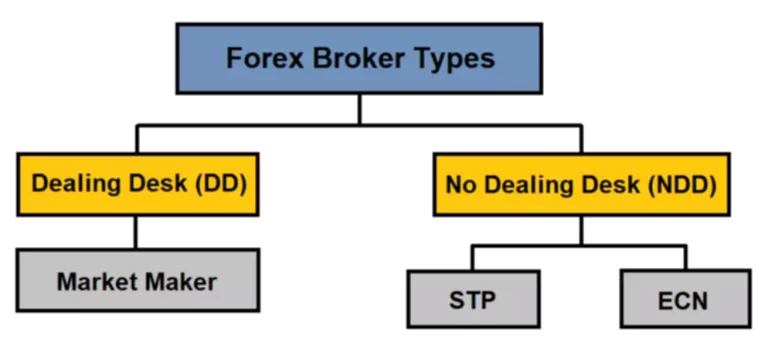Content
Many teams ask https://www.xcritical.com/ whether a container orchestration service (such as Kubernetes) is sufficient, or if they need a CaaS. While a CaaS platform could be considered a container orchestration solution, the fully managed nature of a CaaS generally makes it a simpler option for getting started using quickly. A CaaS is generally suitable for a wide variety of workloads and with less of a learning curve than Kubernetes.
Understanding Cloud as a Service
- And to simplify buying and managing enterprise software, Red Hat Marketplace offers automated deployment of certified software on any Red Hat OpenShift cluster.
- Automated provisioning and scheduling services help turn off the instances when not in use.
- CaaS helps businesses eliminate portability hurdles by automating containerization processes and facilitating seamless, serverless app migration across on-premises and cloud environments.
- It’s cloud agnostic and supported on all the major cloud providers, allowing workload migration between public and private clouds and datacenters.
Traditional card issuance involves lengthy processes, multiple intermediaries and considerable administrative work. CaaS simplifies all of this by providing a single, integrated platform for issuing cards. Proof of personhood This efficient approach reduces the time and resources required to deploy card programmes. Apart from this, for businesses, it becomes mandatory to know if CaaS service providers comply with industry standards and regulations. There are several companies, which offer CaaS services across different industries and help businesses improve their efficiency by streamlining their operations.

Overview of Popular CaaS Platforms and Their Security Features
From card issuance to compliance, fraud monitoring and reporting, all aspects of your CaaS programme is managed for you, allowing businesses to maintain a greater focus on their core operations. This saves valuable time and resources while ensuring that the card programme operates efficiently and securely from day one. One of the key benefits of a CaaS programme is the turnkey nature of the solution. With Cards-as-a-Service, businesses can access a complete package that includes everything needed What Is Crypto as a Service to launch and manage a custom card programme, without having to handle the complexities themselves.
Links to additional resources and information on CaaS and cloud security
Containers work by using operating system-level virtualization to create a lightweight, isolated environment that can run an application and its dependencies. CaaS is especially useful to developers in building containerized apps that are more secure and also scalable. Users can buy only the resources they want (scheduling capabilities, load balancing, etc.), saving money and increasing efficiency. Customers can utilize the software and its functionalities as needed over the internet, usually via a subscription, without the need for installation, updates, or maintenance of the underlying infrastructure. The service provider manages all aspects, such as updates, security, and availability.

Therefore, it makes it easier for the developers and organizations to implement and deploy CaaS as per the requirement. CAAS has eliminated the Developers and Operations team conflicts, indirectly bringing them closer. We’re the world’s leading provider of enterprise open source solutions—including Linux, cloud, container, and Kubernetes. We deliver hardened solutions that make it easier for enterprises to work across platforms and environments, from the core datacenter to the network edge.
Because containers are isolated from each other, if one is compromised, the others won’t be. CaaS can help support a multi-cloud strategy, optimize operating costs and reduce operating costs. Start your interactive tour and see how Wiz can secure your cloud from code to runtime. Software-defined networking (SDN) is a software-controlled approach to networking architecture driven by application programming interfaces (APIs). First of all, you might want to take a look at the infrastructure you currently have and determine your real needs when it comes to service portability. The next step would be to survey the market, researching the available options to see the ones that match the needs of your model.
One of the key advantages of adopting cloud as a service is the ability to scale resources based on demand. With traditional infrastructure, businesses often face limitations when it comes to expanding their computing capabilities. Software Development Lifecycle (SDLC) teams are able to release software products faster while reducing the resources, bottlenecks, and inefficient waste processes typical of software development and deployment. Since containers have everything they need to operate, you can deploy them in several environments.
The size and complexity of modern applications warrants a new approach, which abstracts the application itself from the underlying infrastructure. Containers as a service (CaaS) are cloud-based services that help make the management and deployment of container-based applications even easier. Containers as a service differs from other containerization technologies, such as container orchestration platforms like Kubernetes or Docker Swarm. While these platforms provide powerful tools for managing and deploying containers, they require more expertise and effort to set up and maintain. CaaS providers, on the other hand, offer a simpler, more user-friendly solution for deploying containers.

CaaS providers handle the infrastructure and networking aspects of container deployment, providing users with a range of container management tools and services. This allows users to focus on developing and testing their applications rather than worrying about the underlying infrastructure. CaaS is a game changer for data scientists and data-driven organizations, providing increased portability, scalability, and cost-effectiveness for deploying and managing containers. By using CaaS, data scientists can focus on developing and testing their applications, while CaaS providers handle the underlying infrastructure and networking aspects of container deployment.
CaaS sits between IaaS and PaaS, offering a higher level of abstraction than IaaS but more control and flexibility than PaaS. In the world of modern computing, containers as a service (CaaS) has emerged as a powerful and innovative approach to application deployment and management. It helps developers in developing a fully scalable container and application deployment. The approach is beneficial to IT teams because it provides a container deployment service with governance control in a secure environment. The CaaS approach aids businesses in simplifying container management within their software-defined infrastructure. Containers-as-a-Service is a cloud service model that allows users to upload, organize, start, stop, scale, and manage containers, applications, and clusters.
CrowdStrike has established itself as a leader in container security, offering a comprehensive container security solution via a single platform. Before doing a deep dive into CaaS, let’s check out the history of cloud services and how they have evolved through time. This boost to the software development life cycle is why containers have become so popular. Let’s discuss the advantages of implementing containers and containerization in more detail. By offering a serverless approach to CaaS, developers can spend even more time focused on creating applications. Freed from server configuration and maintenance tasks, they can work more efficiently on their projects.
However, the Docker container platform lacked an automated “orchestration” tool, which made it time-consuming and complex for data-science teams to scale applications. Kubernetes, also called K8s, was created to address these challenges by automating the management of containerized applications. Both Docker and Kubernetes are considered industry standards for containerized development and deployment. CaaS is a cloud-based service hosted by a third-party provider that helps manage and deploy containerized applications.
With portability comes flexibility allowing you to easily move workloads between environments and providers. Instead, the model allows users to develop, manage and run their own applications. PaaS is better for single application deployments because it focuses on a single stack per deployment. As-a-service models depend on IaaS, which is the foundation of cloud computing and includes servers, storage, virtual machines (VMs) and networks. Containers are similar to virtual machines (VMs), although they have key differences. Instead of virtualizing the underlying hardware, containers virtualize an operating system (think Linux, Windows) containing only the application and its dependencies.
This can give you a competitive advantage and improve your ability to respond to changing market conditions. The provider also provides tools and dashboards for monitoring and managing the deployed applications. This means developers can view health metrics, logs, and resource usage, and they can also perform actions like rolling out updates or performing diagnostics.
